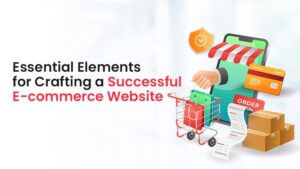Defining a buyer persona is one of the most important steps toward an effective marketing strategy. After all, it is the buyer for which you are taking all the effort!
If you could identify your buyers precisely your marketing strategy would be effective and you will gain more for less.
This applies to your SEO strategy as well, where if you can understand your buyer persona you can create an effective SEO plan that will help you rank faster on Google and get relevant traffic as per the objective of your website.
In this blog, we are going to understand what buyer persona is and how to devise an SEO strategy as per the buyer persona.
What is Buyer Persona?
Buyer personas are the semi-fictional characterizations of your ideal customer. Someone fulfills your business objective like buying your products or enquiring about your services.
Why are we calling personas semi-fictional? Simply because ideal customers don’t exist in real life (pun intended).
Well, to be honest, this is because a part of the buyer persona is based on the research that you carry out to study the behaviors, challenges, needs, wants, and expectations of your buyers and for another part you make assumptions to finally create your ideal customer profiles or personas.
So why is this buyer persona so important for your business?
Well, to put it bluntly, if you don’t know your buyer, who are you going to sell? Your marketing efforts will not be focused and you will be wasting valuable resources on people who are not even your target audience. Creating a buyer persona will help you in:
- Developing your products/services
- Aligning your marketing strategy and marketing platforms
- Creating the message that you want to communicate to your buyers
- Improvising your marketing plan and communication
Now the question arises, how do we create a buyer persona?
The first thing that you need to do to create a buyer persona is to gather insights about your existing customers and their perception of your products. Here are some places where you can gather insights from.
- Dig into your existing analytics – If you own an e-commerce portal or are present on marketplaces like Amazon and Flipkart, extract the existing customer data from there.
- Ask your sales team – They are the ones who are connected to the roots and deal with the customers day in and day out. If you can have an honest discussion with them (which you should, whatever may be the case) they can give you great insights.
- Go out in the market yourself – Above two points are important and essential, but it will be great for the senior management or whoever is creating the buyer persona to go out in the market themselves and talk to existing customers and potential buyers. This will help them get first-hand information and will iron out biases that might be there in the understanding of the team.
- Talk to your channel partners – If you are into channel sales, then talking to your channel partners will help you a lot. Try to gather information on your existing customers and potential customers from them.
Once you have gathered insights the question arises, what do you do with that? Well, you need to segment that data into various categories.
Demographics: First segment the data on the basis of demographics like
Age group – What age group does your maximum number of buyers belong to? Almost all digital marketing platforms give you the option to target specific age groups which will help you remain focused and expect maximum returns.
Income group – Through your insights, you can gather details about what income group your existing customers fall into, and based on that you can plan your marketing strategy. Identifying the right income group is very important as it is more about the affordability of your offerings among the customers. Setting this filter right will ensure conversions.
Location – Location plays an important role if your product or service suits the taste of a specific region. Analyse from your data where the majority of your customers belong. Considering the highest-performing locations, if you market your offerings, you will definitely get volumes.
Behavior: Another important aspect that most marketers don’t give much attention to is behavior. Understand how your buyers behave.
- Do they purchase more when you come up with offers?
- How do they respond to your new launch announcements? Are there more buyers for bundled products?
- Many such questions help you understand your buyer’s behavior.
Interests: Check what your buyers are really interested in. A person would be interested in many things but you can focus on his interests which are directly or indirectly related to your product or service.
For example, if you are selling sunglasses then a person who is interested in fashion (direct relation) is important to you. Similarly, a person who likes different cuisines might not be of much importance to you but a person who loves to travel (indirect relation) will be important to you.
Life Events: People’s buying behavior changes when they go through a major life event such as relocation, wedding, parenthood, etc. Understand what life events can give you maximum mileage. For example again if you are selling sunglasses you might want to target people who have recently got married. The reason is, newlywed couples travel for their honeymoon and they also want to look good in pictures on social media. They will not hesitate to buy one or several good pairs of sunglasses for themselves. They will not wait for offers and will be more brand conscious.
Challenges: Look into the challenges your buyers may face. Understand how your product or service can help them overcome those challenges. Challenges are a great factor to persuade someone to purchase a product or take up any service. Challenges might range from having time constraints to not being able to get desired promotion.
Aspirations: Know what your buyers aspire for and how you are able to serve their aspirations. Every person has multiple facets to their personality. A corporate executive might also want to look good and be the center of attention at a social event. Explore different sides of your buyer persona and list down their aspirations.
Now that you have done the research and segmented the traits, work on completing the buyer persona.
- Give a name to your persona for your entire team to identify
- Create a story around the persona. This will help you visualize the persona as a living being, what he/she does, how they behave etc.
- Align the demographics, behavior, interests, etc with the story.
Please keep in mind that you create not more than 2-3 buyer personas. Otherwise, your marketing efforts might get defocused.
How does your buyer persona fit the SEO strategy?
The last and most important part is to align your SEO strategy with the buyer persona. Here is what you can do to make sure that your SEO efforts are targeted toward the prospects and customers who actually mean business to you.
Shortlist keywords – Shortlist keywords on the basis of how your buyer persona thinks and what phrases they might be searching for on Google. Segment your SEO keyword list as per:
The intent – With what intention the user might have punched in a specific keyword. Extending our sunglass example:
If your buyer persona is young and dynamic you should probably select keywords like ‘Latest Sunglasses’ understanding that his intention might be to explore the latest designs for sunglasses.
If your buyer persona is young, dynamic, and also price conscious. You should select keywords like ‘Latest sunglasses at best price’ as he would probably intend to buy new fashionable sunglasses.
Check Keyword Volume – With your SEO efforts, you would surely want to get more organic traffic on your website. While intention-driven keywords are more focused and relevant for your business they usually have less traffic. You need to shortlist keywords that have high search volume and at the same time are relevant to your buyer persona. For example, if your buyer persona prefers exclusive products then you might want to select keywords such as ‘premium sunglasses’. Over here the intention will be vague but the volumes will be high.
You need to have a fine balance of intention-based keywords and volume-based keywords. These two criteria will form the basis of the further criteria of selection.
Industry-related keywords – These keywords will be related to a specific industry or profession. If your buyer persona indicates that it belongs or is inclined to a specific industry you can check the intention and keyword volume of a specific industry. If you are selling sunglasses and find that your buyer persona is a corporate executive. You may want to select keywords like ‘Latest sunglasses for working professionals’, ‘Formal sunglasses’ or ‘Classic sunglasses’
Brand-related keywords – These are the keywords that are more related to your brand and not so much connected to your buyer persona. However, since we are talking about keyword selection for SEO, we thought it would be in your benefit to touch upon this important point.
Now, for eg. If your brand name is ‘Eyeshades’ then the keywords might be like ‘Eyeshades Sunglasses’; or ‘Eyeshades eyewear’. These keywords might have negligible search volume but it is important to include them as they represent your brand. When people start getting aware of your brand slowly these keywords will start getting the most relevant traffic on your website.
Publish blogs – After having a good understanding of your buyer persona, select the relevant topics and keywords that your buyer persona might be looking for. Center your blogs around those topics and keywords and publish blogs that are relevant to your buyer persona. This will not only establish a good connection and connect with your target audience but Google search crawler will also get fresh content to crawl which will help you go up in ranking.
Link building through guest blogs – You can publish blogs on relevant portals that appeal to your buyer persona. Again for example. If your buyer persona is a corporate executive you can do guest blogging on a portal that corporate executives are interested in and is also relevant to your offering. Such as personality grooming, making a first impression in an interview, standing out in a corporate crowd, etc. These guest blogs will get a lot of referral traffic on your website and the backlinks that you generate from these portals (with high domain authority) will pull your website up on Google ranking.
Understanding your buyers is the first and most crucial step in SEO and any marketing strategy. Getting it right is half the battle won. Centering your SEO strategy around that will not only keep your efforts in line with the rest of the marketing approach but also garner results.







